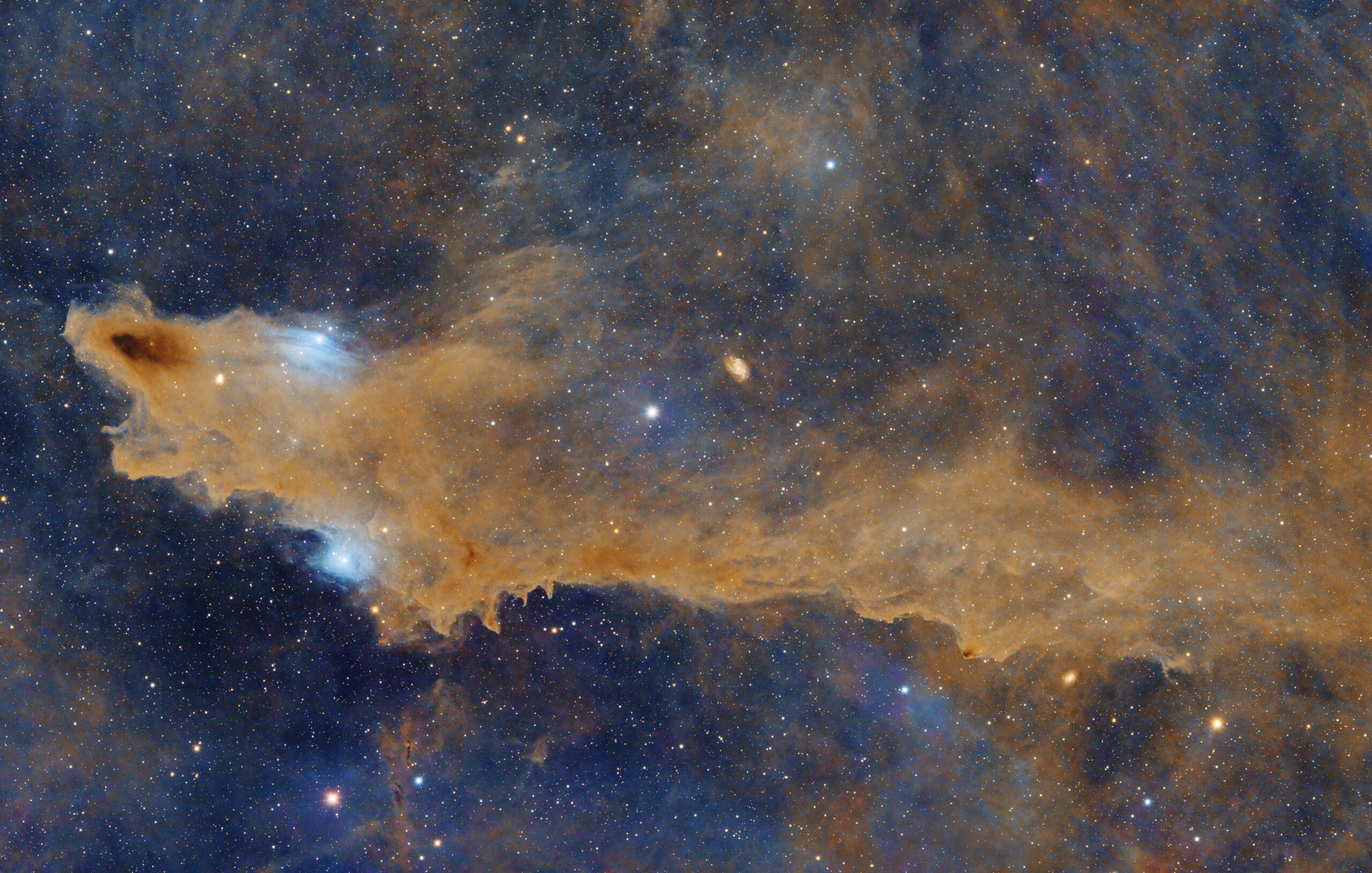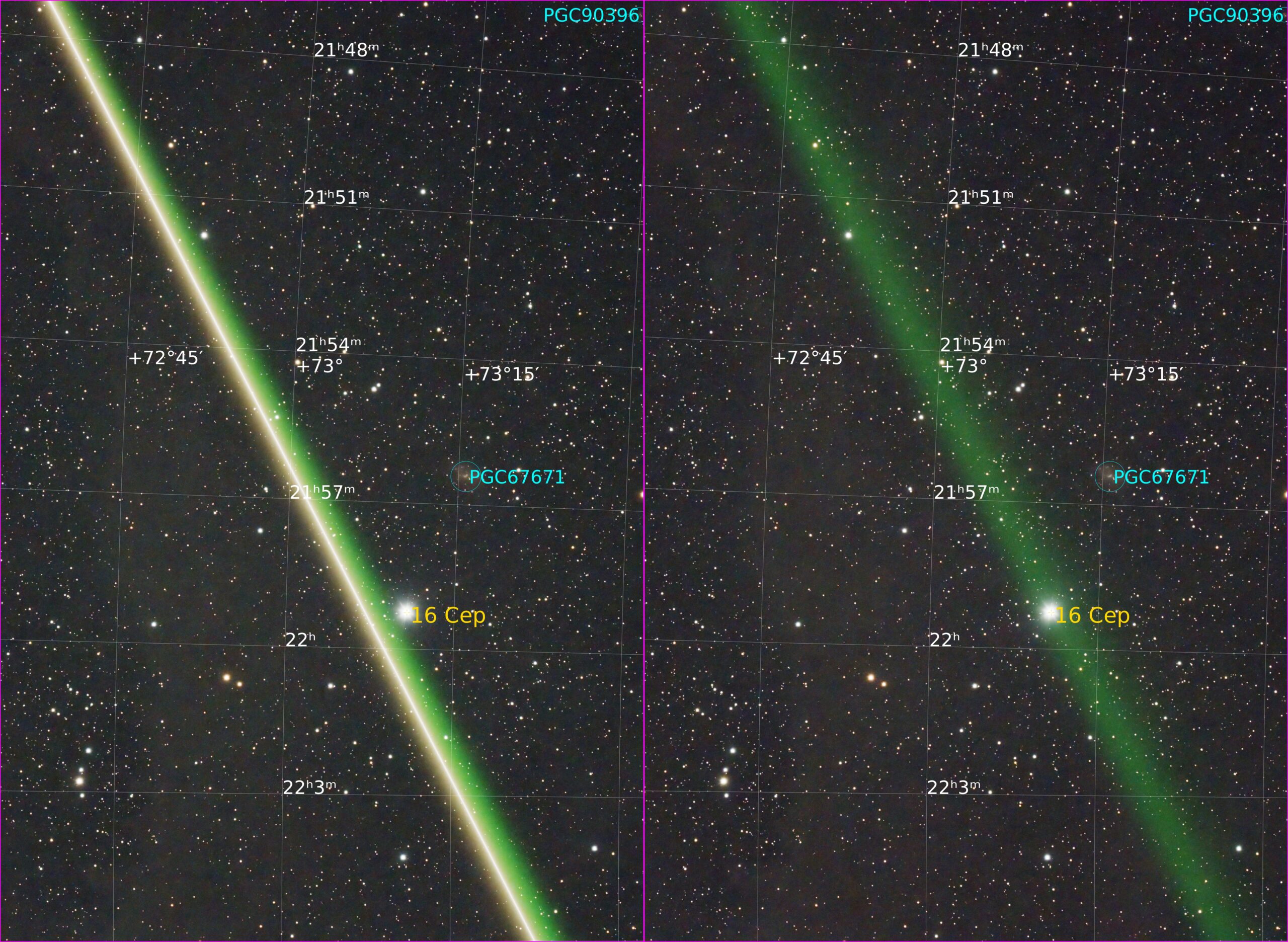 Dark Nebulae
Dark Nebulae
LDN 1235, LBN 535 (Dark Shark Nebula)

One of my favorites – the Dark Shark in constellation Cepheus. A wonderful combination of dark and bright nebula 650 light years from earth.
These nebulae are not entirely dark. The dust is illuminated by high energy radiation from young stars and emit a faint reddish glow of photoluminescence. Together with reflected starlight we see this orange to brownish tone. These nebulae are also known as ERE (extended red emission) nebulae. The more dense parts in the head of the shark block the light from behind entirely.
Note the detailed structures in the blue reflection nebulae vdB 149 and vdB 150.
A few beautiful background galaxies (PGC67671, PGC67347, PGC90396) shine through all that dust, the brightest lying about 50 million light years beyond this scenery.
This is a three panel mosaic, acquired over three nights, not easy to combine because of all that background and strong gradients in the different panels. Swipe to see more details.
Select your favorite: the more smoky or the more colorful version.
Celestron RASA 11 v2
Celestron CGX-L mount
RisingCam ATR3CMOS26000KPA
Optolong UV/IR Cut filter
Bortle 4-5
No moon
Panel 1: 374x30sec (3h7m)
Panel 2: 369x30sec (3h4m30s)
Panel 3: 294x30sec (2h27m)
PixInsight
Photoshop
Hee another coloring.

Meteor photo bombing my Dark Shark

Theses are two subsequent single exposures of 30 seconds duration acquired with a color astrocamera and without filter in the visible range. The telescope was a pretty powerful RASA 11, which allows for short exposure times.
Initially when I saw the first image, I thought it could have been a plane from nearby airport Zurich or a satellite …
But when I saw the green afterglow in the subsequent exposure, it was obvious that this must have been a meteor.
The green glow is in this particular case is from oxygen in the higher atmosphere at around 60km, heated up by the very fast meteor entering the atmosphere.
Green meteors are often identified as iron-nickel rich meteors, because nickel glows at some spectral lines in the green part of the spectrum at about 500nm wavelength. If that would have been the case here, I should have noted some signal in the blue channel … which does however not show any trace of the afterglow, nor does the red channel. The only spectral range where this camera is only sensitive in the green channel is around 550nm, close enough to the oxygen line at 557nm. Additionally we know that light from this line decays exceptionally slowly over a few seconds, which is long enough to see the afterglow in the second exposure.
A third exposure immediately acquired after these two does not show any trace of the afterglow anymore.
Earths rotation explains the shift of the afterglow to the right side, in particular in the second image.
Faint dark nebulae (parts of the Dark Shark Nebula or LDN 1235) are visible on the left and on the right galaxy PGC67671 about 40 to 50 million light years away says hello.